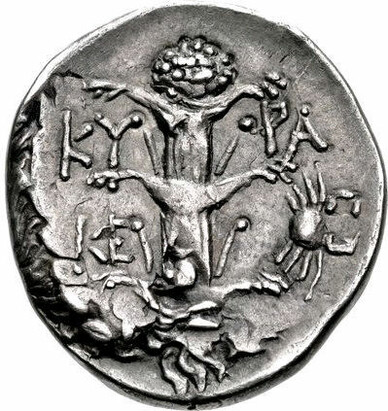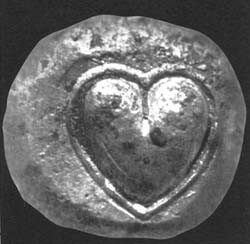Silphium is an extinct plant which once grew in North Africa. In the ancient Mediterranean, it was used as a seasoning, perfume, medicine, aphrodisiac, and contraceptive.
It was the main trade item from the city of Cyrene in what is now Libya. Silphium was so important to Cyrenese trade, the plant was stamped onto their coins. Some of those coins show only the seed pods of the plant, which are heart shaped – and some people speculate this may be where the now ubiquitous heart symbol originally came from


